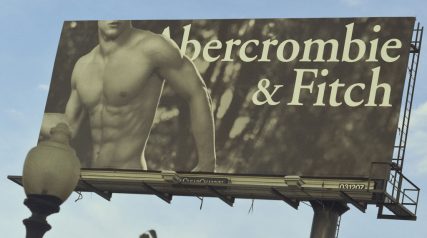Guest post by Daniel Bennett
This week, the U.S. Supreme Court heard oral arguments in Equal Employment Opportunity Commission v. Abercrombie and Fitch. This case brings together two issues: religious exercise and employment discrimination.
Facts of the case
Samantha Elauf, a Muslim who wears a headscarf, applied for a sales position at a local Abercrombie & Fitch store. She was turned down for not meeting the company’s strict “Look Policy,” which includes a ban on hats and scarves, among other things.
After a friend working at the store informed Elauf she was rejected because of her headscarf, Elauf contacted the EEOC, who filed a lawsuit. Denying someone employment due to their religious beliefs violates federal civil rights laws.
EEOC’s oral argument
First up: Ian Gershengorn, representing the EEOC (and, by extension, Elauf). He got off to a rocky start, mainly because of Justice Scalia’s frustration over what the EEOC actually wanted from the case:
Early on, Justice Scalia expressed frustration with the government’s position:
Gershengorn: The test that the courts of appeals have adopted for more than two decades, which is the test that we ask this Court to adopt, is that the employer needs sufficient information from any source about the employee – about the applicant’s religious needs – to permit the employer to understand the existence of a conflict. That’s the test that the courts of appeals have been—
Scalia: I don’t care what they’ve used. That doesn’t make any sense to me.
Scalia then wondered whether applicants should declare the religious motivation behind clothing violating an employer’s “look policy,” prompting a question from Justice Ginsburg:
Ginsburg: Did the employer tell [Elauf] – did the employer tell her that it had this Look Policy that a headscarf would violate? How could she ask for something when she didn’t know the employer had such a rule?”
Gershengorn: That’s exactly, the problem, Justice Ginsburg and Justice Scalia, in response to your question.
Abercrombie & Fitch’s oral argument
Defending Abercrombie and Fitch was Shay Dvoretsky. Dvoretsky also got off to a rough start, but unlike Gershengorn, he never fully found his groove. Early in the argument, Chief Justice Roberts elicited a frustrated response from Dvoretsky:
Justice Alito was troubled by the company’s position:
Alito: This is what I don’t understand about your position with respect to this particular case. As I understand it, Abercrombie does not have a policy that the – that an interviewee must comply with the Look Policy; is that correct?
Dvoretsky: The Look Policy itself does not apply at the interview.
Alito: So what – on – there would be no reason for not hiring the individual involved here unless you assumed that she was going to wear a scarf every day. Just because she wore a headscarf on that one day, wouldn’t mean that she necessarily was going to wear it everyday [sic]…. Maybe she’s just having a bad hair day so she comes in with a headscarf, but she doesn’t have any religious reason for doing it. Would you reject her for that? No. The reason that she was rejected was because you assumed she was going to do this every day and the only reason why she would do it every day is because she had a religious reason.
Justice Kagan later accused Abercrombie of dismissing applicants like Elauf to avoid having “awkward conversations” about religion in the workplace. Dvoretsky disagreed:
Dvoretsky: Justice Kagan, the problem is not having awkward conversations. The problem is that the EEOC’s rule would lead employers to treat people differently based on their religion, which is precisely the opposite of what Title VII wants.
Ginsburg: Title VII requires them to treat people who have religious practice differently. They don’t have to accommodate a baseball cap. They do have to accommodate a yarmulke.
Forecast
This case is difficult to forecast, given the issues involved. For example, the Court has consistently protected individual expressions of religion (such as wearing a headscarf). But it has routinely sided with employers over the claims of employees. As such, the case doesn’t set up the conservative-liberal split common in controversial cases.
However, Elauf and the EEOC should be feeling confident. Not because of the particular strengths of their position, but because the justices seem to want a more reliable and consistent rule for future cases. And based on their questions, the justices seem poised to side with Elauf.
A 7-2 vote, with Scalia and Thomas dissenting, seems about right.
Daniel Bennett, PhD, researches the conservative legal movement. He is an assistant professor of political science at Eastern Kentucky University. You can follow him on twitter at @BennettDaniel.
Don’t miss any more posts from the Corner of Church & State. Click the red subscribe button in the right hand column. Follow @TobinGrant on Twitter and on the Corner of Church & State Facebook page.






